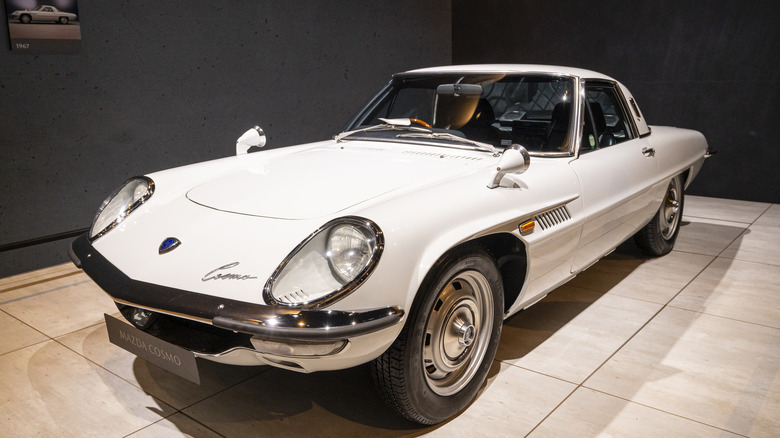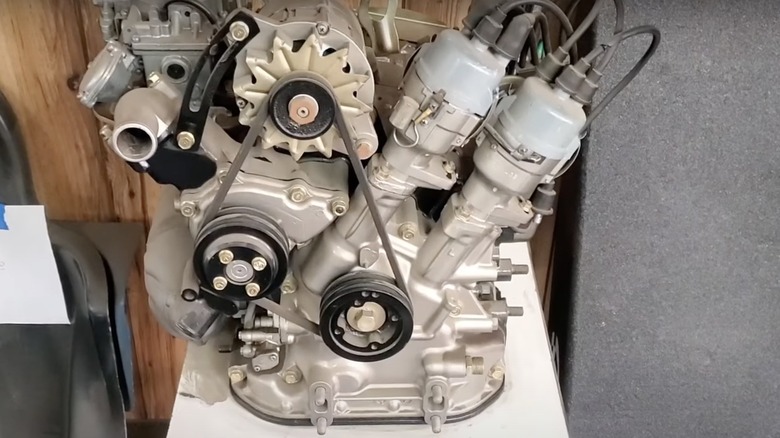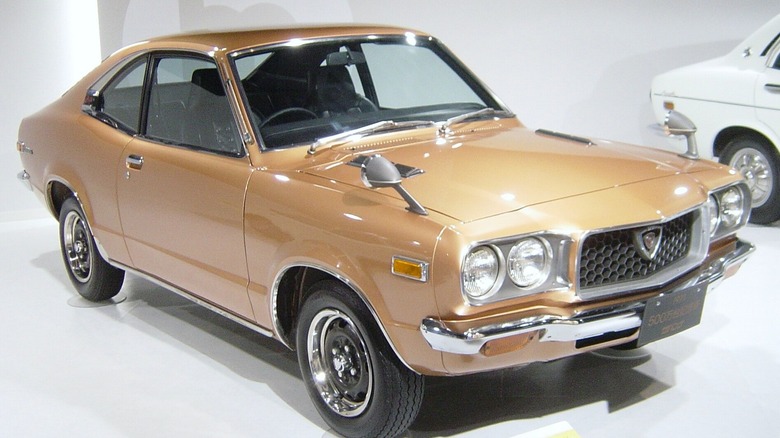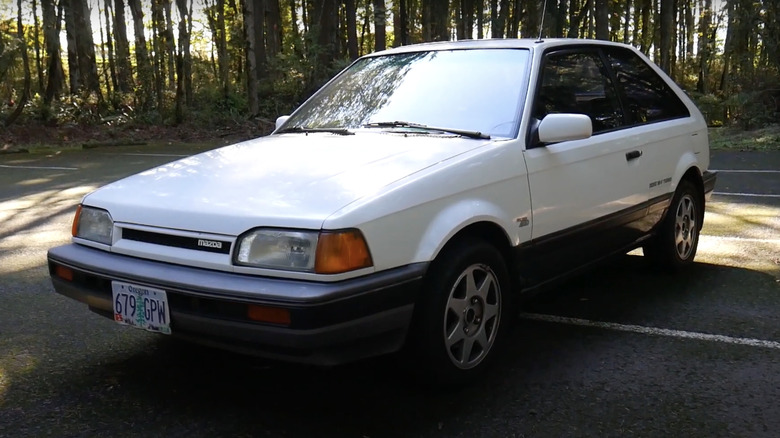3 Underrated Engines That Powered Classic Mazda Vehicles
Mazda began 1920 as Toyo Kogyo Co., Ltd, a manufacturer of corks. Toyo didn't make its first vehicle until 11 years later, a three-wheeled motorbike called the Mazda-go. Founder Jujiro Matsuda named the company after Ahura Mazda, the god of Zoroastrianism who embodied harmony, intelligence, and wisdom. Looking forward to 2020, Mazda released a collection of 100th Anniversary models, each of which took design cues from the R360, Mazda's first passenger vehicle. That kei car debuted in 1960 and is among the brand's best models ever.
Mazda is well-known for using the Wankel rotary engine in many of its cars, particularly the RX-7 and RX-8 sports coupes. Where traditional engines rely on a piston moving vertically in a cylindrical chamber to turn a crankshaft to generate power, a rotary engine employs a triangular rotor inside an oval-shaped housing. Mazda's most famous rotary engine is the 13-B, first used in the 1973 Luce AP (Anti-Pollution). It also appeared in '70s Cosmo AP, REPU (Rotary Engine Pickup), Parkway, Roadpacer, RX-4, and RX-5.
A major innovation came in the mid-'80s with the addition of RESI (Rotary Engine Super Injection) technology, a new valve control system that improved performance and fuel economy. Although the 13-B gets heaps of well-deserved attention, Mazda has produced a few other engines that often slip under the radar of even the brand's staunchest loyalists.
10A 2-rotor (Cosmo Sport)
Mazda's Cosmo Sport made automotive history in 1967 as the first mass-produced car with a two-rotor engine. The Cosmo Sport wasn't the first car to use a rotary engine; that honor went to the 1965 NSU Wankel Sport Spyder, but Todd Lassa of Motor Trend wrote that the Spyder's single-rotor engine "shook like a coin-operated motel bed." Some early export-version Cosmos were badged simply as "110S" models, taking that label from the 110 horsepower two-rotor 10A engine that went under the hood. Each rotor housing had a volume of 491 cc and two spark plugs, and the engine was fueled by a four-barrel Zenith Stromberg carburetor with manual choke. The 10-A had a redline of 7,000 RPM, which was relatively high compared to piston engines of the time but appropriate for a sportscar that weighed less than 2,100 pounds.
In December 1969, Motor Trend compared the Cosmo Sport's handling favorably with British toys from MG, Triumph, and Morgan. Mazda only made 343 10-A Cosmo Sports, but Mazda began using it in other cars in 1968 including the R400 and RX500. In 1970, Mazda began exporting 10-A powered cars to the United States. The 10-A's rarity makes it unheralded compared to some of Mazda's other rotary powerplants, but its status as a pioneer makes that reputation a bit of a shame.
12A Rotary
Mazda rotary engines had a few intermediate steps between the 10A and 13B, including the 12A, a larger version of the 10A that was first produced in 1970. The radius of the rotors remained the same, but the depth was increased from 60mm to 70mm, along with the housing. These changes grew the chambers from 491 cc to 573 cc and total displacement to 1146 cc. The rotors were made of cast iron, and the housings were aluminum with a coating of carbon steel. The eccentric shafts were chromoly steel and the apex seals were made of aluminum and carbon.
Early 12A engines had two distributors, and in 1982 the 12A became the first rotary engine to get fuel injection and a turbocharger. That first turbo was a Hitachi HT-18BM that increased output to 160 horsepower and 167 pound-feet of torque. The turbo-powered 1982 Cosmo's 7.4 second zero to 60mph time made it Japan's fastest production car at the time, and a lighter and smaller turbocharger that came in 1984 boosted engine output by 5 horsepower and 3 pound-feet of torque. Until the end of its run the following year, the 12A was also used in the Luce, RX-2, RX-4, and RX-7.
[Featured image by Taisyo via Wikimedia Commons|Cropped and scaled|CC-By 3.0]
1.6L turbo
Not all of Mazda's most underrated motors are rotary engines, and one of its most under-the-radar models was graced with a 1.6 liter turbocharged four-cylinder that turned this car into a rally racing monster. Mazda introduced the 323 in 1977 as the Familia in Japan and the GLC (Great Little Car) in North America. Cheesy name aside, the 323 was a quick success worldwide despite the biggest initial engine offering being just 1,272 cc. In 1978, a 1,415 cc engine was added to the option list, and by the end of 1979, Mazda had sold nearly 900,000 323s.
The coolest 323 didn't arrive in North America until 1988, though. That was the 323 GTX, a rare all-wheel-drive version of the compact that helped birth the hot hatch revolution. In its otherwise demure front end sat a turbocharged version of the 1.6 liter inline four that would later go in the debut edition of the Miata, which hit dealerships as a 1990 model.
The Miata's naturally aspirated engine made 116 horsepower and just 100 pound-feet of torque, but the boosted version in the 323 GTX produced 132 horses and 136 pound-feet. Microchip tweaks and turbo upgrades could up those numbers even further, and rally racer Jeff Zurschmeide told Hagerty, "It's an absolute hoot to drive." Mazda made just 1,243 copies of the 323 GTX in 1988 and '89, and the proliferation of higher horsepower hot hatch models in the years that followed left this fun-loving beast in the dust.



